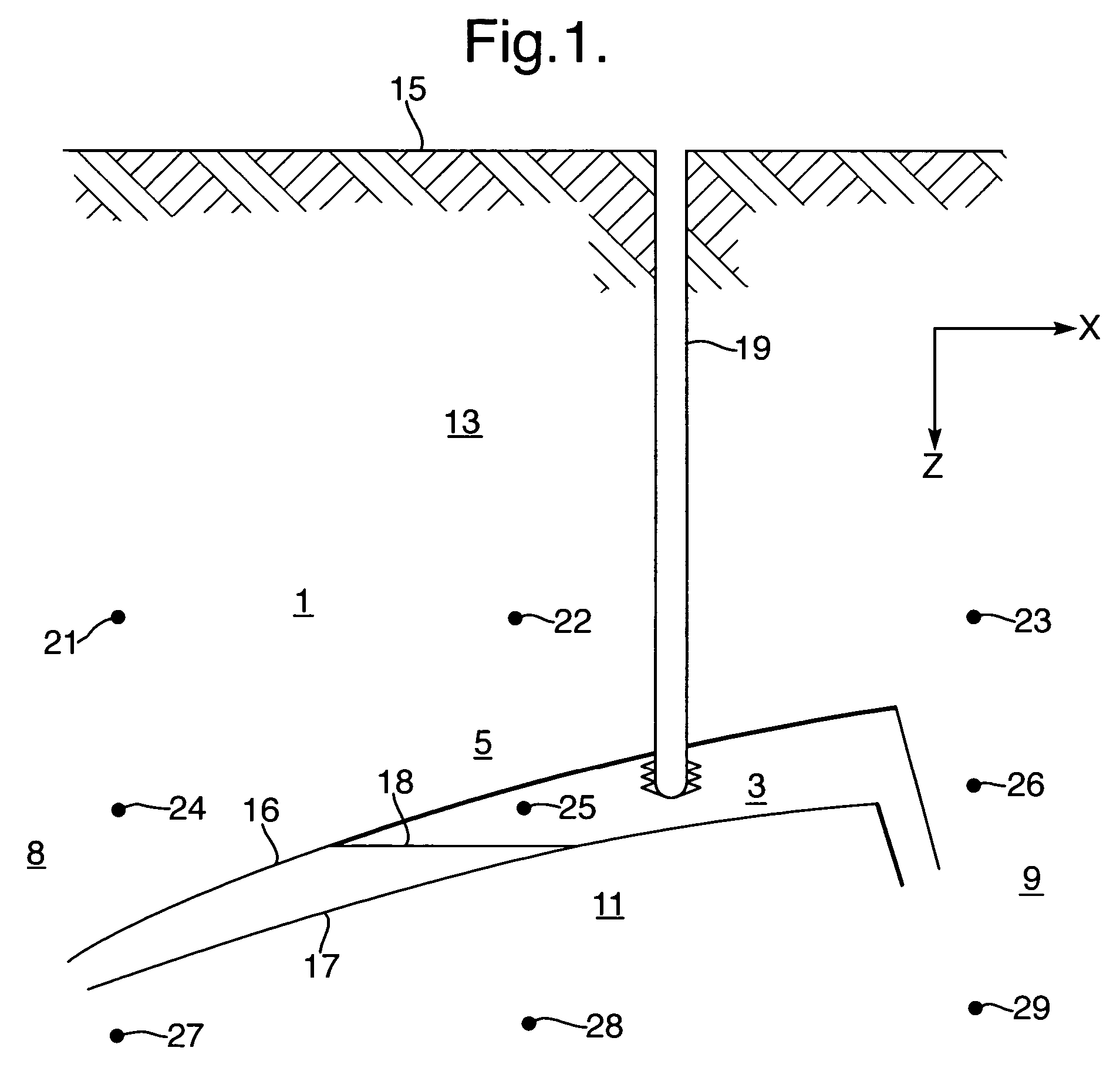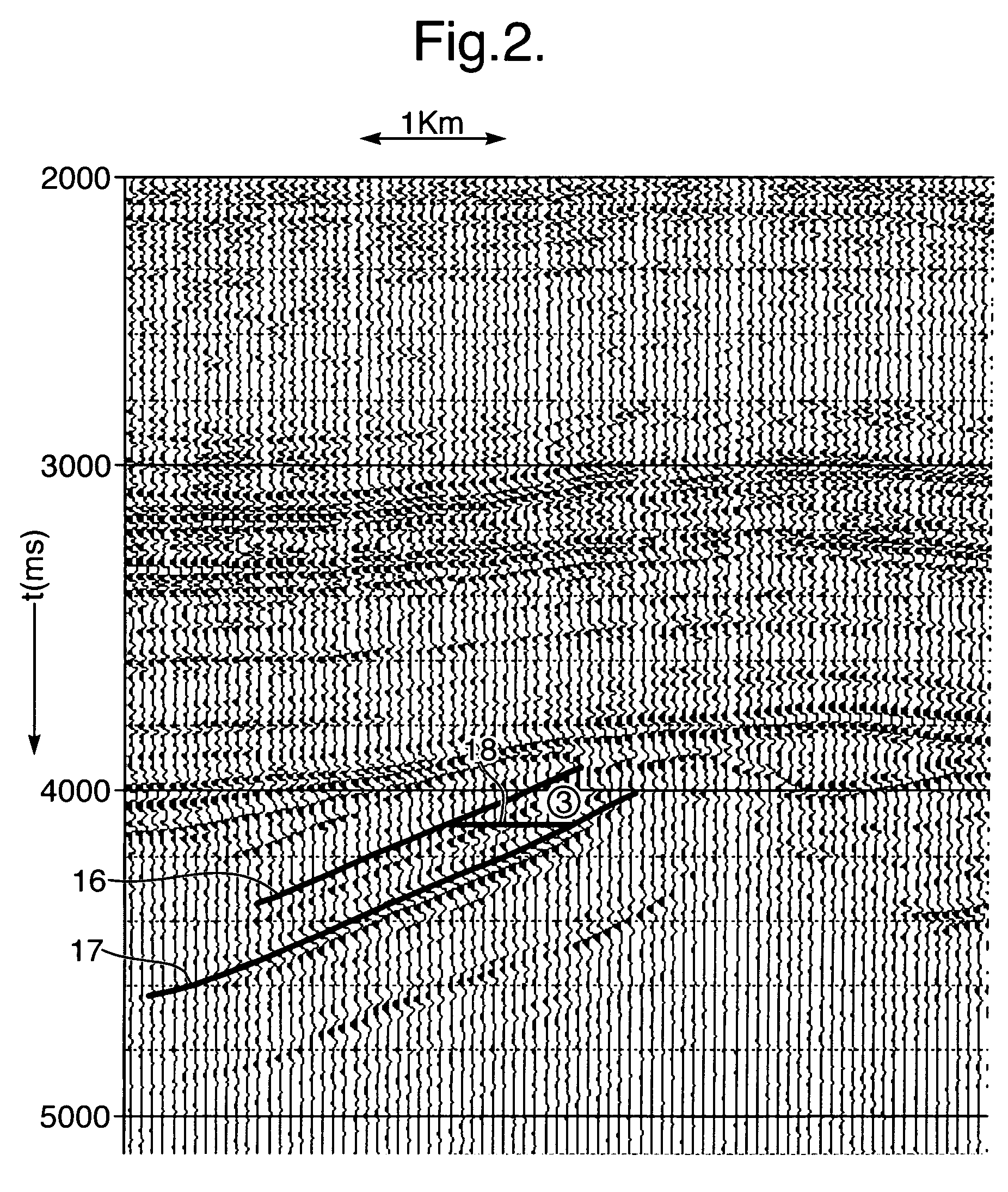Time-lapse seismic survey of a reservoir region
a reservoir region and time-lapse seismic technology, applied in the field of method of investigating a reservoir region, can solve the problems of a large thickness of the reservoir region or layer, and a large amount of seismic data processing in the reservoir region
- Summary
- Abstract
- Description
- Claims
- Application Information
AI Technical Summary
Benefits of technology
Problems solved by technology
Method used
Image
Examples
Embodiment Construction
[0024]The present invention is based on the insight gained by applicant that changes in the reservoir pressure give rise to changes in stress in formation regions adjacent to the reservoir region. Since the change in stress in general causes a change in seismic velocity, the change in stress is observable in seismic parameters, such as in the two-way travel time, outside the reservoir region.
[0025]For example, it was realized that depletion in the reservoir region could result in so-called stress arching. Stress arching occurs when a reservoir region is locally compacting, e.g. due to lowering of pore pressure, and when the overburden as a result transfers part of its weight to non compacting or less compacting formation regions laterally surrounding the compacting reservoir region, which results in an arch-like curved distribution of stress.
[0026]One element of the present invention is the recognition that stress distribution changes extend, and are observable in seismic parameters...
PUM
 Login to View More
Login to View More Abstract
Description
Claims
Application Information
 Login to View More
Login to View More - R&D
- Intellectual Property
- Life Sciences
- Materials
- Tech Scout
- Unparalleled Data Quality
- Higher Quality Content
- 60% Fewer Hallucinations
Browse by: Latest US Patents, China's latest patents, Technical Efficacy Thesaurus, Application Domain, Technology Topic, Popular Technical Reports.
© 2025 PatSnap. All rights reserved.Legal|Privacy policy|Modern Slavery Act Transparency Statement|Sitemap|About US| Contact US: help@patsnap.com



